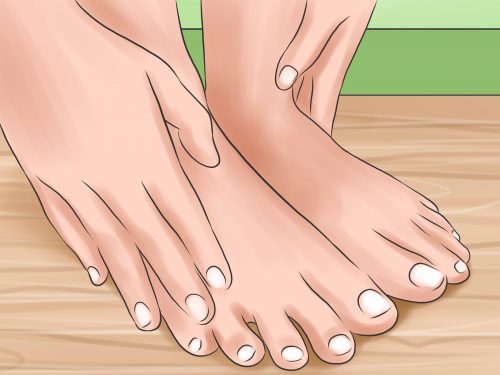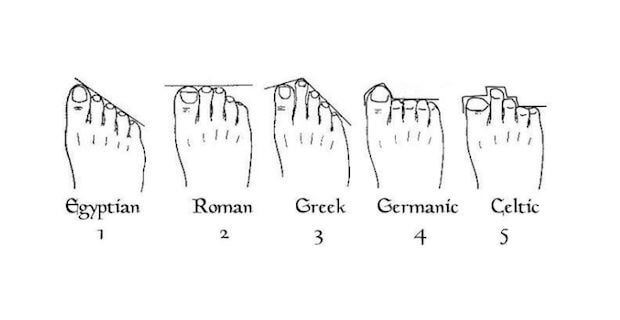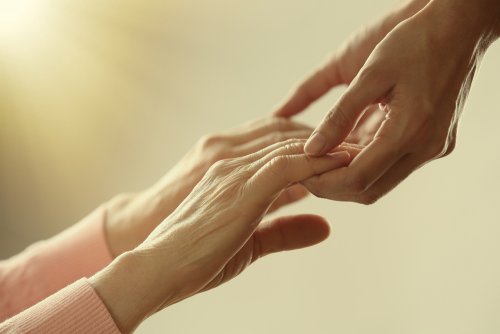What Your Feet Say About You


Reviewed and approved by the nurse Leidy Mora Molina
Even though it may not seem like it, the truth is that the shape of your feet can say a lot about you.
Did you know that you can determine your personality through reflexology?
Imre Somogyi, the president of the Reading Toes Association, explains how you can identify the characteristics of each person through reflexology.
Greek feet
To know if you have a Greek foot, you need to take a look at your second toe. This is also called the index toe. For this kind of foot, the index toe is longer than your big toe.
On the other hand, the other toes are progressively shorter.
If you have a foot with these characteristics, this type of foot usually belongs to people who are creative, athletic, and very active.
Also, people with this kind of foot are always enthusiastic about new ideas. They motivate the people around them.
They are also very impulsive. This is a quality that causes them to have an excessive amount of stress and make some mistakes.
Square feet
The most characteristic aspect of this kind of foot is that the big, index and middle toes are usually the same lengths. Meanwhile, the others are a little shorter.
People who have this kind of foot usually have a very analytic personality. They always think about everything before making a decision and analyze the positive and negative aspects of the problem.
They aren’t impulsive. In addition, also don’t let others influence them. This is because their decisions have very solid bases.
They are usually practical, reliable, and confident. This is why you can always depend on a friend with this kind of foot.
Egyptian feet

This kind of foot is characterized by having all of its toes in a line getting progressively smaller after the big toe.
The people who have this type appreciate an intimate and private life above all. They tend to have hidden aspects and distance themselves from reality.
At the same time, they are dreamers, rebels, and impulsive. This is especially true when they face the everyday aspects of life. In addition, their mood changes very often.
Rounded feet
If you have a rounded foot, pay attention. You should know that this type of foot usually indicates that the person is always polite, gentle, and fears expressing their opinion.
On the other hand, if someone’s feet are more angular, they’re someone who knows how to defend themselves when necessary.
Read also: Stronger Feet Are within Reach with These 8 Exercises
Elongated feet
Long feet with thin toes and narrow heels belong to reflexive people who appreciate exclusive things.
According to reflexology, these people can be prone to suffering certain pains. These include gas, anxiety, and stress.
Wide feet
On the other hand, people with wide feet and short toes belong to people who aren’t as materialistic.
In this case, foot reflexology tells us that they can suffer from cardiovascular problems or bad circulation.
Hands are also important

When talking about your extremities, your feet aren’t the only thing able to show someone’s personality. You can also depend on the shape of the hand.
For instance, according to a study carried out in 2011, the length of your ring finger depends on the amount of sex hormones you were exposed to during pregnancy. These hormones are estrogen and testosterone.
Also, they have also established that most men have a ring finger that’s longer than their index finger. In women, it’s usually the opposite.
Overall, it’s possible to know what a person is like just by looking at their hands or feet. What do your hands and feet say about you?
Main image courtesy of © wikiHow.com
All cited sources were thoroughly reviewed by our team to ensure their quality, reliability, currency, and validity. The bibliography of this article was considered reliable and of academic or scientific accuracy.
- Blanco, A. L. (2017). Nuevo manual de Reflexología: El método más completo y actual sobre las técnicas, la práctica y la teoría de la ciencia reflexológica. Robin Book.
- Cely, E. R. L., Castiblanco, N. J. P., Manrique-Abril, F. G., & Díaz, M. A. V. (2012). Testosterona prenatal: digito D2:D4 y conducta. 1998-2010. Rev. salud hist. sanid.Revista salud, historia y sanidad, 7(1). https://agenf.org/ojs/index.php/SHS/article/view/156
- Fred Gustavo Manrique-Abril, Mario Andrés Valderrama Díaz, E. R. L. C. N. J. P. C. (2013). Testosterona prenatal: digito D2:D4 y conducta. 1998-2010. REVISTA SALUD, HISTORIA Y SANIDAD, 7(1). Recuperado a partir de https://agenf.org/ojs/index.php/shs/article/view/156
- Hansmann, B. (1997). Con Los Pies en el Suelo: Forma de Cuerpo y Visión Del Mundo. Icaria.
- Pérez Pico, A. M., Castaño Justo, B., & Mayordomo Acevedo, R. (2016). Relación entre la fórmula digital y las deformidades del antepié en una población joven. European Journal of Podiatry / Revista Europea de Podología, 2(1), 1–11. https://doi.org/10.17979/ejpod.2016.2.1.1363
This text is provided for informational purposes only and does not replace consultation with a professional. If in doubt, consult your specialist.








